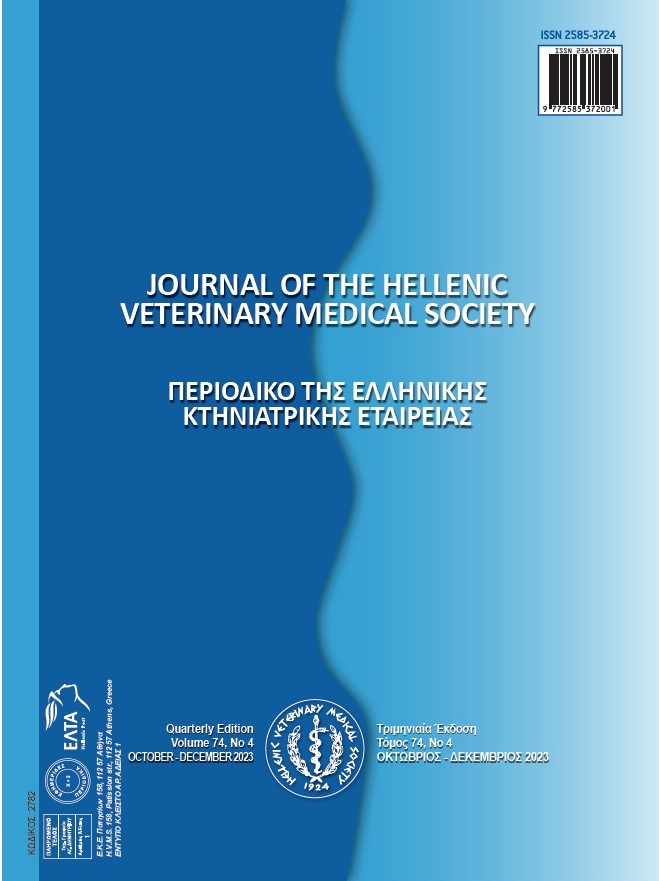Isolation and culture of feline keratinocytes and fibroblasts for the generation of artificial skin equivalent
Аннотация
This study aimed to isolate and culture keratinocytes and fibroblasts from feline skin to ultimately create an artificial engineered skin, including dermis and epidermis, that would be applied for the effective treatment of large cutaneous deficits in cats. To date, no data have been reported on the isolation and culture of feline skin cells. To exploit the potential to grow in vitro and cryopreserve epidermal keratinocytes and dermal fibroblasts, skin biopsies were obtained using a 6 mm biopsy punch, from 8 healthy cats that underwent ovariohysterectomy. Fibroblasts were isolated following collagenase digestion of the dermis and were grown in DMEM supplemented with 10% FBS. Keratinocytes were isolated from the epidermis following digestion with trypsin solution. Keratinocytes were grown on a collagen type I matrix, in a growth medium consisting of DMEM: F12 (3:1) medium supplemented with 10% FBS, 1 μM hydrocortisone, 1 μM isoproterenol, and 0.1 μM insulin. Both fibroblasts and keratinocytes were grown in a humidified atmosphere with 5% CO2 at 37oC. The medium was changed twice a week and cells were grown up to 80-85% confluency for 4 passages. Cells at passages 1-2 were cryopreserved in a freezing medium at -80oC. Fibroblast freezing medium consisted of DMEM supplemented with 30% FBS and 10% DMSO, whereas keratinocytes were cryopreserved in a keratinocyte growth medium supplemented with 10% DMSO. Both cell types were recovered following cryopreservation and cultured as described above until passage 4. Therefore, we can create a bank of fibroblasts and keratinocytes to recover cells for further culture and for the generation of autologous or heterologous skin equivalent in vitro. This is the first study reporting isolation and culture of keratinocytes and fibroblasts from feline skin, setting the grounds for the development of engineered feline skin.
Article Details
- Как цитировать
-
Lavrentiadou, S., Angelou, V., Chatzimisios, K., & Papazoglou, L. (2024). Isolation and culture of feline keratinocytes and fibroblasts for the generation of artificial skin equivalent. Journal of the Hellenic Veterinary Medical Society, 75(2), 7429–7434. https://doi.org/10.12681/jhvms.34710
- Выпуск
- Том 75 № 2 (2024)
- Раздел
- Research Articles

Это произведение доступно по лицензии Creative Commons «Attribution-NonCommercial» («Атрибуция — Некоммерческое использование») 4.0 Всемирная.
Authors who publish with this journal agree to the following terms:
· Authors retain copyright and grant the journal right of first publication with the work simultaneously licensed under a Creative Commons Attribution Non-Commercial License that allows others to share the work with an acknowledgement of the work's authorship and initial publication in this journal.
· Authors are able to enter into separate, additional contractual arrangements for the non-exclusive distribution of the journal's published version of the work (e.g. post it to an institutional repository or publish it in a book), with an acknowledgement of its initial publication in this journal.
· Authors are permitted and encouraged to post their work online (preferably in institutional repositories or on their website) prior to and during the submission process, as it can lead to productive exchanges, as well as earlier and greater citation of published work.






